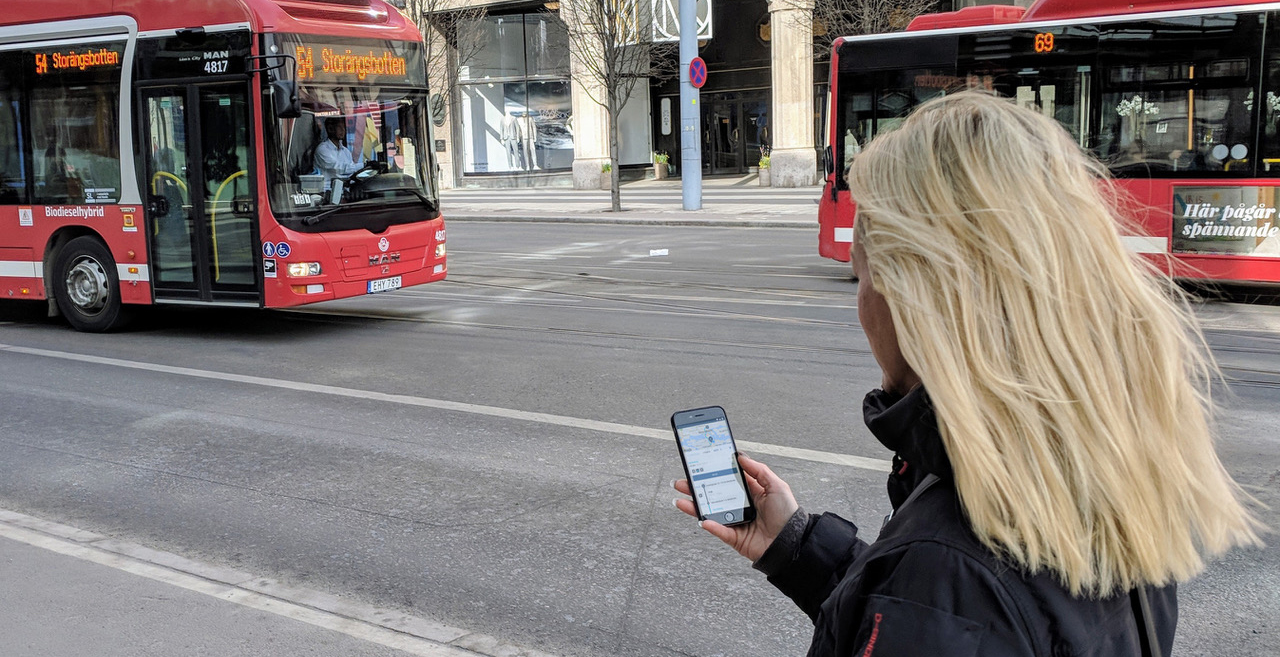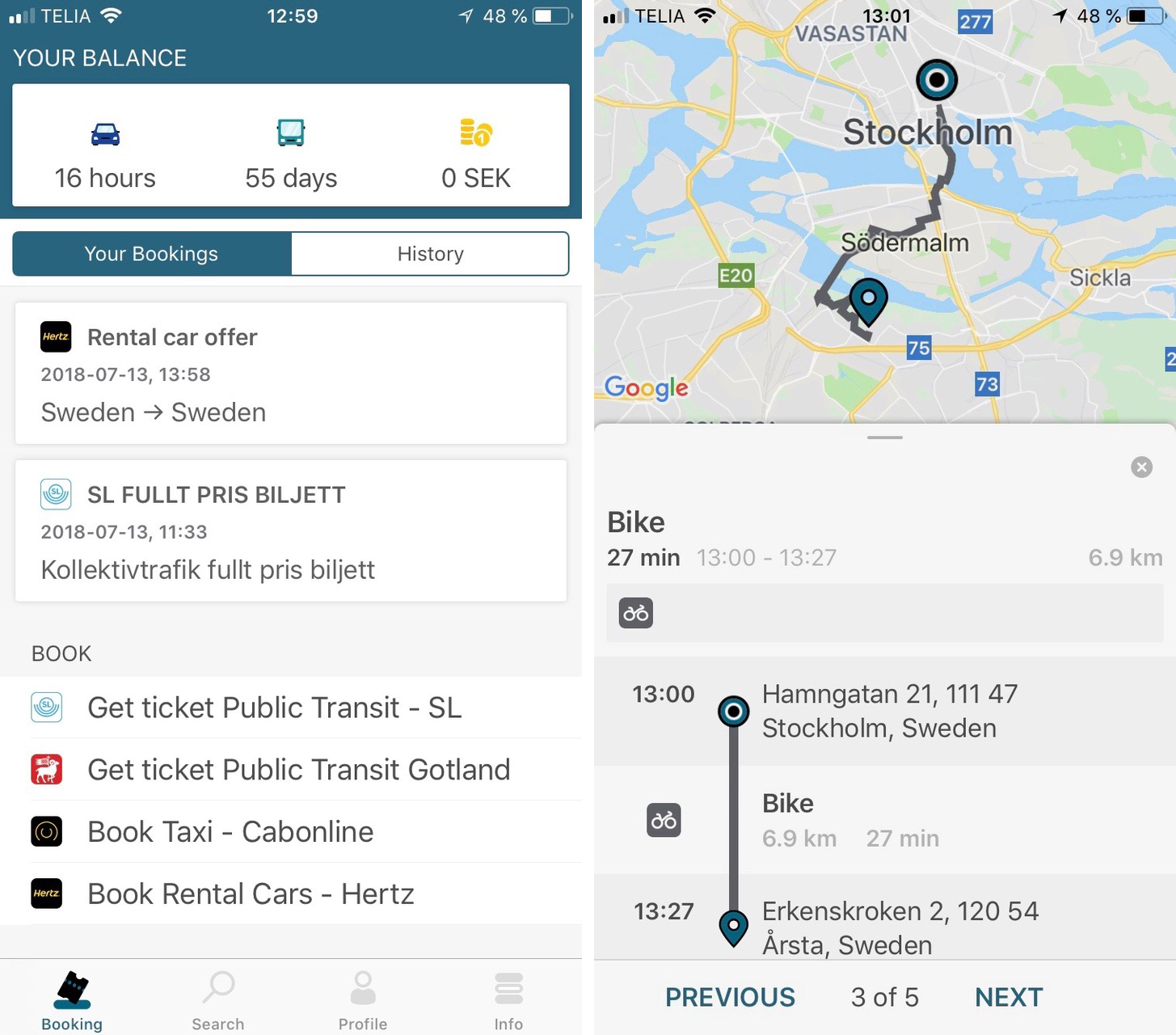
MaaS Is About Sharing Customers (Not Just Data)
novembre 21, 2018 — The Big Picture
Warning: This text will focus on the challenges of implementing MaaS. Yes, there are clear positive effects for both citizens and cities if we can offer something more convenient than owning a car, but there are a lot of devils and details in doing it, challenges that are not understood by looking at powerpoints. Trust me.
Mobility as a Service (MaaS) is Netflix for mobility? Not. Building a server network, signing contracts with film studios and right owners, marketing in multiple countries is not easy, but it can’t match the complexity and diverse local conditions that characterises the mobility eco-system. First and foremost, MaaS is not a digital service. It consists of very physical services with high margin cost and low operating margin, or even negative in the case of public transport. The different types of services are very different – they are as diverse as the flight, hotel room, dinners and guided tours that make up an all-inclusive vacation trip when it comes to price models, liabilities, content and organisation.
Sharing customers
Integrating this is a challenge, but an even greater challenge can be to get the mobility service providers to participate. According to a study* the three top barriers for establishing a MaaS service is the providers perceived risk of cannibalism, of losing their brand recognition and customer relations. Many providers actually prefer holding on tight to the customers they have, than share many more customers in a much larger market, high volume customers that can be created by converting car owners with a comprehensive offer. The real discussion is not about sharing data, it’s about sharing customers.
Innovative co-operation cannot be forced, but authorities can increase the chances for it to happen. One example is the EU directive for open transport data, that Swedish public transport actors are planning to expand into open ticketing. Licenses for operators of taxi and car sharing companies can come with demands to at least technically open up for integration. But most of all do we need to show – or make sure of it – that they actually will benefit from MaaS. Fully integrated, subscription based mobility service will probably include only a limited number of non-competing transport service providers that in a way will own the customers together, minimizing the above mentioned risks.
Meeting all the needs
The two most crucial elements mobility services should cover to cater for the needs of a household – from morning to evening, Monday to Sunday and January to December – is a) public transport that connect the home with most of the relevant places in a city and region and b) pre-bookable cars for shorter trips close to the home. For longer trips in time or distance we add rental cars, for special ad hoc trips we add taxi and if there is bike, e-scooter or free-floating carsharing we can add that also, but the latter ones are not what replaces a private car.
As opposed to free floating services such as DriveNow, many fixed car sharing operations are membership based, quite small and can or will not scale easily. Furthermore, the cars are typically underused in the weekdays and overbook in the weekends. This leads to a non-profitable service with and perceived low availability. One solution is to combine the proximity and easy access of car sharing with the size and flexibility of rental car fleets to maximize both the usage and the availability of the cars.

Public transport is the backbone
Public transport is a special case since in most cities with a good service, public transport is a publicly run, politically controlled, subsidized monopoly. However, it still needs to be an integral part of a flexible, user centric commercial service. This means new ticketing or price models and Public Private Partnership (PPP) agreements that will guarantee fair pricing, transparency and that the MaaS operator actually reach new customers that public transport cannot win by itself – leading to more sustainable travel behaviour. Public transport providers share the view on cannibalism, brand and customer relation with their commercial colleagues, but also have a public opinion to consider. On the other hand, being the sole local operator of a must-have-service makes it possible to influence the MaaS service, making sure it really contributes to the goals of the city.
The close co-operation with public transport providers is one example of how important the local context is – which by itself is a challenge when it comes to scaling up to other cities and countries. The MaaS market might be global, but every business will be local, making a franchising model more valid than setting up a global operator. We are starting to see a number of MaaS platform-as-a-service providers, much like there are companies such as Ericsson and Huawei that offers platforms to mobile operators. The MaaS business needs a platform, but everyday MaaS is not a platform business like Uber or Air BnB.
Room for innovation
And then it’s the question of making money. Any long term successful service needs to create – and capture – enough value to pay the cost for IT, support and recruitment. This is true also for a publicly run MaaS service. Tax payers should not be spent on services that don’t make peoples’ life easier and healthier for now and following generations. A MaaS service without a long term viable business model will live and die as a pilot and will not change the world, no matter how cool the app is.
All these challenges are actually good news for entrepreneurs and other forward-thinking actors in the mobility eco-system. Handling complexity upstream and offering easy access downstream is what creates value and that will open up a huge market. Offering easy to use, integrated mobility, as convenient as owning a car – that is our reason for being.
* IRIMS is study from K2, the Swedish knowledge center for public transport, of how institutional frameworks hinders and enables new integrated mobility services. Available via Research Gate.